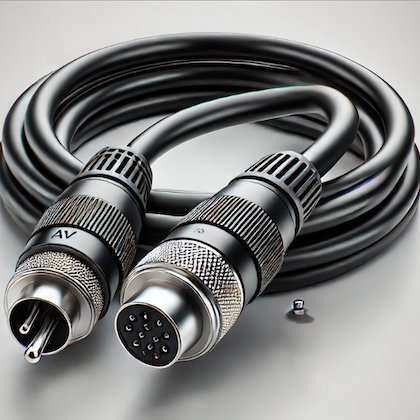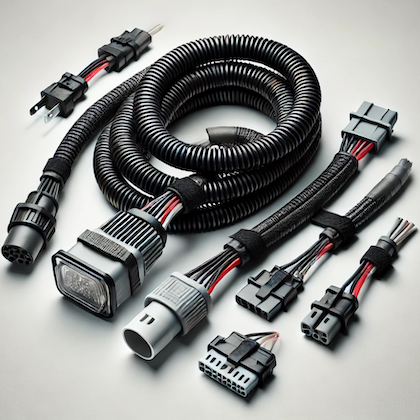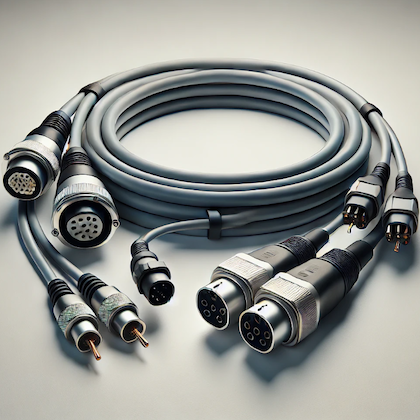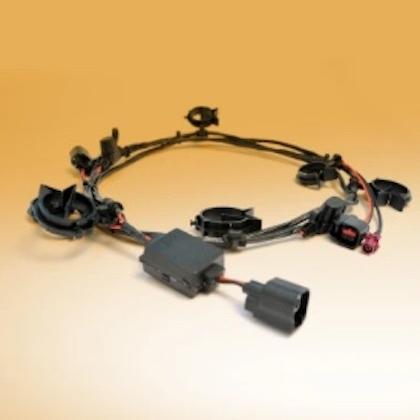What Are Cookies
As is common practice with almost all professional websites this site uses cookies, which are tiny files that are downloaded to your computer, to improve your experience. This page describes what information they gather, how we use it and why we sometimes need to store these cookies. We will also share how you can prevent these cookies from being stored however this may downgrade or 'break' certain elements of the sites functionality.
Automotive Cable Assemblies
Y.C. Cable is your trusted partner for high-performance automotive cable assemblies and wire harnesses. With over 40 years of experience, we specialize in custom B2B solutions tailored to the needs of vehicle manufacturers and system integrators worldwide.
What are automotive cable assemblies?
Automotive cable assemblies play crucial roles in modern vehicles.
-
- These are intricate systems of cables and connectors used in vehicles.
- Primary automotive wire and cable: These are the essential electrical wires that transmit power, signals, and data throughout the vehicle.
- Sensor cables: These connect various sensors (such as temperature sensors, oxygen sensors, and speed sensors) to the vehicle’s control units.
- Custom wire harnesses: Customized wiring systems designed for specific vehicle components or functions.
- Battery cable assemblies: These connect the battery to the vehicle’s electrical system.
- Multi-conductor assemblies: Bundles of multiple wires used for various purposes.
- EMI/RFI suppression products: Components that reduce electromagnetic interference and radio frequency interference.
- Electrical integration systems: Complex wiring networks that integrate various vehicle systems (e.g., infotainment, lighting, safety features).
Types of Automotive Cable Assemblies
Automotive cable assemblies are an important part of the electrical system of a vehicle. They are employed in a variety of purposes, including the transmission of electrical power, the transmission of signals between different components, and the provision of data links. Here are some examples of common automobile cable assemblies:
Battery Cable Assemblies:
These are heavy-duty cables that connect the vehicle's battery to its electrical systems, such as the ignition and starter motor. They must be extremely heat and corrosion-resistant.
Signal Cables Assemblies:
These are used to transfer signals between different parts of the vehicle, such as sensors, switches, and control modules. These cables need to be reliable and able to transmit signals with minimum interference.
RF Cable Assemblies/Coaxial Cables Assemblies:
These are used to transfer high-frequency signals, such as those used in GPS and satellite radio systems. These cables need to be shielded to prevent interference and signal loss.
Lighting Cable Assemblies:
These assemblies power the vehicle's lighting systems, which include headlights, taillights, and interior lights.
Flat Ribbon Cable Assemblies:
These are used to transfer signals in tight spaces, such as between the circuit board and display in the dashboard. These cables are thin and flexible, making them ideal for use in confined spaces.
Ignition Cable Assemblies:
Also known as spark plug wires or high tension leads, these connect the vehicle's ignition system to the spark plugs in the engine.
Data Bus Cable Assemblies:
These cables transfer data between various components of a vehicle's system, such as sensors, control units, and display devices. They are required for today's computer-controlled cars.
Sensor Cable Assemblies:
These cables connect numerous sensors (such as temperature, pressure, and speed) to the vehicle's control units, allowing it to monitor and alter its performance in real-time.
Audio/Video Cable Assemblies:
These cables are used in the entertainment system of a car to connect audio and video signals.
Control Cable Assemblies:
Used for mechanical manipulation such as controlling the throttle, brakes, clutch, and so on. They are used to convey mechanical force or energy.
Harness Cable Assemblies:
These assemblies group together multiple cables, grouping them into a single harness for simplicity of installation and to save space.
Power Cable Assemblies:
These cables distribute power from the battery to the various electrical components of the vehicle, such as the radio, air conditioning system, power windows, and so on.
Each type of automobile cable assembly is intended to perform a certain duty and to resist the conditions of its intended use, such as heat, vibration, and moisture.
Our engineers offer cutting-edge technical support services to assist our customers with custom product consultation, cost reduction analysis, and many other services. As a professional automotive cable assembly & cable harness manufacturer, we are experts in A/V signal cables, car light cables, agricultural machinery cables, and In-Vehicle Infotainment (IVI) Systems.
No matter what technical requirements you have, we are ready to work with you to deliver products on time and provide excellent quality and service support.
Contact us to get a quick quote and more information.
B2B Manufacturing ONLY
No Automotive Cables for Personal Vehicles






